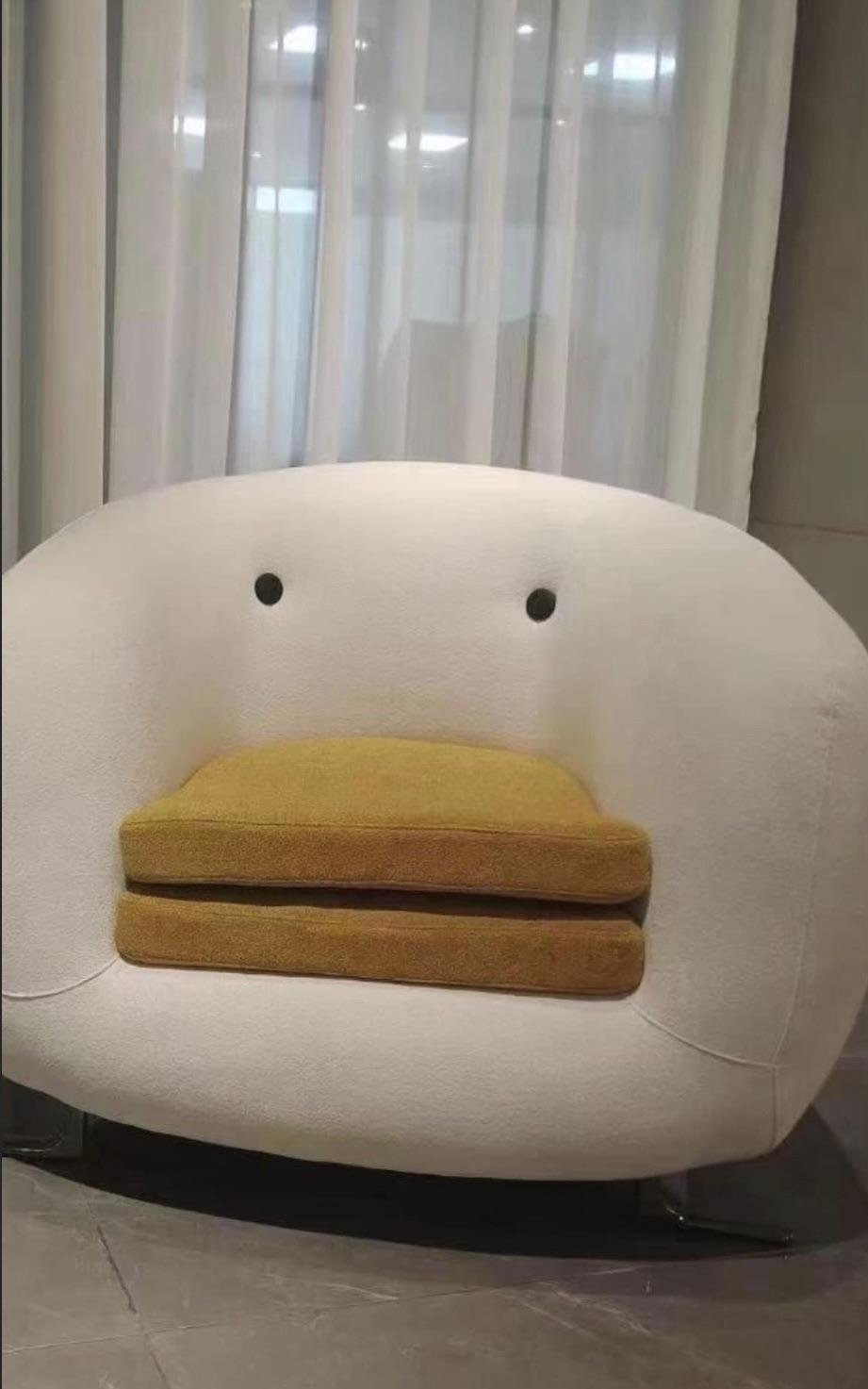Radio waves are faster in a vacuum, ditch the fan and put it in a shop vac.
But the fan blows the air away, leaving nothing but vacuum
💡
Speedy speed
It would actually make more sense to put in in front of the router 😅
Yeah, but I’d be worried about my files getting sliced up by the fan blades.
You could change the MTU size to allow for smaller IP packets without causing fragmentation.
Or switch to TCP, or use error correction with UDP.
Forward error correction algorithms to handle packet losses
And put weapons grade Uranium in front of it to get the quantum boosts.
Not safe for work
Wifi are em waves switch on oven for higher speeds
May work in niche cases where passive cooling is insufficient and overeating causes Instabilität.
I dunno, I thought that it was instabilität that causes overeating.
It’s a vicious cycle. But you already knew that, doctor.
INSTABILITÄT!!!
If you put a lamp on the front of a train going 100 m/s, does the light coming out of the lamp go C+100?
If yes then the fan will totally blow the wifis all over the place and give better signal
You can’t compare light speed with non light speed, I think that’s not reasonable
It’s literally the thought experiment Einstein lays out in his book on Special and General Relativity.
Now, let’s say you are on a train moving at 0.1 C and you observe a lightning bolt striking the front and the back of the train at the same time…
You’ll get faster download, but your upload speeds drop off a cliff
If you make a series of tubes, you can route from the router and reroute back to the router, creating an information highway through, what we call in comp science, a “loop”. Depending on which side you install the turbo, you can replicate the same tech your ISP charges extra for in “speed boost”. If you go bi-turbo—one in inbound and one in the outbound tubes of the loop—you can generate effectively unlimited speed, where onlyfans used in your inbound and outbound tubes limit based on their RPM. This is why I use RC plane turbines. It’s loud, but I’m streaming YT in 480.
If you put all this in a very small tube that you can easily plug into your router and your PC, then we’ve got real innovation on our hands!
I’m interested to learn more about this. Any article I could read?
Here is an alternative Piped link(s):
https://piped.video/RXJKdh1KZ0w?feature=shared
Piped is a privacy-respecting open-source alternative frontend to YouTube.
I’m open-source, check me out at GitHub.
Great! I can’t wait til they come to my town!
That’s absurd. You don’t need to route to or from your router. That’s it’s entire job. Do you also run computations for your computer and speak on behalf of your speaker? Complete madness.
deleted by creator
Yes I do, computers calculate okay but I’m different
I bet you fing too, you monster.
deleted by creator
Use another fan to make the wifi circular, then your upload speeds shouldnt be hindered
Genius. Where’s your GoFundMe?
Then you add ping by changing the path
You can counter those with a pingpong bat.
If you play pong online, your ping will be super low.
only, if the fan has metal blades, spinning with the same rpm as the wifi frequency. trust me
Hmmm. 144 000 000 000 RPM for 2.4GHz, a bit fast you may need a better fan !
Just buy a satellite dish off eBay and place it behind the router
Putting a fan begin your router won’t boost the range because photons emitted by the router’s antenna won’t be affected by moving air from the fan. Putting a floodlight however…
Photons?
Visible light, radio frequencies, microwaves, x-rays, infrared, ultra violet and so on are just light (photons) at different frequencies.
And your friendly EMH.
Even if they were affected by any measurable amount, the photons move so much faster than the air that it’s an absolutely negligible difference incapable of being measured. It’s like 1 trillion divided by 1 trillion and 1 equaling approximately 1. The outcome is unaffected by the extra 1. It’s a non-factor. I’m trying to explain this for the future not-smart-people but I think I’m just making it much worse.
The wifi beams come out in all direction. You can help boost the wifi by placing a mirror behind the router. Then the rays will be reflected back to you and not wasted.
I’m about 62% sure this is a joke…
Please help, I’m clueless about this kind of stuff.
It’s the same principle of al satellite dish and it works, but I’m 86% sure that mirrors won’t affect wifi, so we’re still not at 100% but getting there.
Depends on what frequency your “mirror” mirrors.
A traditional one reflects higher frequency of electromagnetic rays (visible light) than what you need for wifi (in the microwave frequencies)
If it’s a silver layer on a glass/plastic pane (like basically any mirror) and it’s big enough (more than idk, let’s say 20 cm to be safe) why wouldn’t it mirror the lower frequencies too?
Not enough interaction with the waves.
I’m not fully versed on all the physics of it, but to my understanding, the layer of silver that makes up the reflective surface of a mirror is crazy thin, like, less than the thickness of paint.
The basic concept I was explained is that the longer the wavelength (lower frequency) the easier it is for it to penetrate obstacles, specifically things that are relatively opaque to radio waves. The very high frequency (small wavelength) waves of light, are so small that almost everything interacts with them; so when they make it to the silver layer, despite that silver layer being impossibly thin, the >100THz waves, will bounce. When dealing with stuff that’s much lower frequency (like 2GHz to 5Ghz, many orders of magnitude lower frequency), there’s not enough of the material to interact with the wave to have any significant effect on its propagation, so it passes right through.
This is a good observation and a great question. I’m sorry I couldn’t be more specific, I’m just not as well versed in the physics of it all to really get into the details; but I hope this helps.
Oh yeah probably but it might absorb some or even more thant it reflects
So you’re saying the walls of an old microwave might do the trick
Jokes aside, anything made of metal will be a good enough reflector for most consumer use.
A coke can cut vertically in half makes a great parabolic relfector. Pepsi can maybe. Dr pepper not recommended.
Actually yes.
Microwave ovens work by exciting water molecules using many hundreds of watts of ~2.45 GHz microwaves.
This specific frequency has a heating effect on water, so when you blast enough of it at food, which is often very saturated with water, it will heat up. The heat energy will transfer to the rest of the molecules in the food by contact.
That’s the general idea at least… I’m sure there’s more interactions that happen, water is just the most significant, to my knowledge.
So the protection in the microwave is capable of reflecting (for the purposes of containment) 2.4Ghz microwaves very well, and bluntly, does a good job with many other radio waves too, across a pretty broad band of frequencies… so the material that makes up the protective chassis of a microwave is ideal for making a reflector for wifi, since it was constructed with the idea of reflecting 2.4Ghz frequencies. Microwave ovens create the signal fairly crudely with a magnetron, but the underlying concepts are the same.
I think mirror won’t work, but this might:

Look up the DIY parabolic reflectors people used to use on their WiFi antennas, they did actually work! I used one and recorded a marked improvement in WiFi strength at the furthest point in my home that was previously a low connection quality spot.
Radio waves come out of an antenna and just go in every direction, so a router against your outer wall is wasting a lot of its energy just directed into the neighbour’s house. If you can reflect some of that back in, you get improved signal reception. It’s very cool :-)
I have one against an outside wall to get service in my standalone garage. Success.
But if waves transmit information, and the same information comes at all sides, won’t the signals that bounce off the reflector arrive after the waves with a direct line and thus transmit redundant information?
Waves can bounce off of everything, wifi/Bluetooth/cellular automatically compensate for this effect. There is a lot of signal processing involved with wireless data transmission to filter noise and correct errors. This is part of the reason why it’s taken decades to reach this level of wifi speeds and why Bluetooth has a real hard time matching wired audio.
Yes. They will.
When creating a reflector, you want to place it a specific distance from the focal point, so the waves are in sync with the waves going direct to the device, they will be offset one or two full wavelengths, but that hardly matters. About a half wavelength away from the emitter/antenna is ideal.
There’s also a way to calculate the parabolic arc you want to make the signal very directional (the way a satellite dish works, but in reverse. Those dishes collect and concentrate the signal, in this case you want to redirect the emission in the same direction - think about it like a flashlight, where the majority of the light is in a small cone in the middle, but there’s still some light going everywhere that isn’t blocked by the mirror reflector dish in the flashlight).
There’s a hundred different ways to get this done, tons of antenna designs to work with, but in general, wifi uses beamforming, which is a method to use multiple antennas that are transmitting the same signal, but they have the exact waveform slightly offset from eachother, which makes the signal much stronger in the complementary direction. It basically generates a beam the hard way. Wifi has gotten very good at doing this, so reflectors and directors, and all that fancy antenna design stuff isn’t really required.
The only real improvement to be made, given wifi’s current complexities, is to put in larger antennas; most wifi antennas are quarter wavelength or often smaller… “Upgrading” to well matched full wavelength antennas may yield some benefit, but there’s a lot of nuance there too. It’s a deep subject so I’m just touching on how things go. I find it fascinating, I’m sure not everyone does.
So, wifi is made up of radio waves, specifically micro waves, which are all sub-classifications of electromagnetic waves.
There’s another common electromagnetic wave you’ve certainly heard of: visible light.
While the wording is a bit awkward, the previous poster isn’t wrong. Just, in radio, it’s referred to as a reflector, not a mirror. Same principle, different area of technology.
EM is incredibly interesting especially since all data communication, with the exception of copper wires, is EM. Fiber optic is light, which we’ve established, is EM, and wifi is radio, which is also EM. Apart from the copper in your ethernet/DSL/Coax cable, it’s all EM. It’s fascinating to me that we use EM for so much, and fiber is considered the pinnacle of data connections, yet, light propagates slower through glass than radio propagates through the atmosphere, so technically, wifi can get a signal from A to B faster than fiber can… and we put that stuff in our house.
All EM is at, or near, the speed of light. Glass, used in fiber, tends to slow the light down about 30% or so… that’s fascinating because the internet is largely fiber, and so the information for this or anything else on the internet is being delivered to your device at, or very near the speed of light.
Anyway, I’m off topic. I’m just a gigantic nerd about this stuff.
yes and you can also leave out a plate of cookies where you want a strong signal so the wifi waves will go there when they’re hungry
Just don’t bring the ones from the third party, I heard they’re bad for the privvy or something.
Don’t be silly!
Wifi is not man, Wifi doesn’t eat cookies
It eats lead. That is why wifi antenna’s have a bit of lead surrounded by copper, so it can lure the wifi with the lead and catch it with the copper. Also why it stops at lead walls since it is like a buffet for them.
Run a longer wire.


















